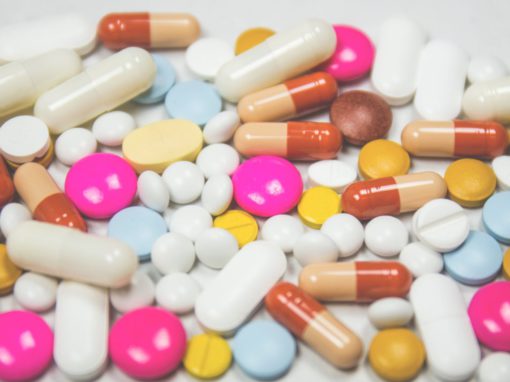Men’s reproductive health has always been an awkward topic of conversation for ages. The amount of social stigma surrounding it was to such an extent that people never wanted to talk about it openly.
In truth, illness can strike anyone at any time.
It is always best to be aware of sexual health to be detected and treated as soon as possible.
One of the most common sexual illnesses among men is ED or Erectile Dysfunction.
Check out the article on 10 proven tips to improve erections and give them a try.
What is erectile dysfunction (ED)?
Erectile dysfunction(ED) is a health issue where men cannot maintain an erection throughout sexual activity.
This is also referred to as impotence.
Erectile Dysfunction, if left untreated, could permanently impair you from having a fulfilling sex life.
Erectile Dysfunction can also occur if the person has intense stress. However, if this condition occurs frequently, it might be related to an underlying cause that needs to be addressed quickly by a certified medical professional.
Symptoms and recognising signs of ED
The primary recognisable symptom of ED is an erection that is not firm enough for sexual intercourse or having a complete inability to achieve an erection.
The following are some of the most commonly known signs of ED.
- Erection is not firm enough for sex
- Diminished sexual desire
- Brief erection
- Difficulty in maintaining an erection throughout sexual intercourse
Studies done among Singaporean men have indicated that the severity and prevalence of ED are significantly high after 50 years.
What are the key reasons for erectile dysfunction?
Before going to the risk factors, let us first understand how your penis achieves a successful erection.
First and foremost, the nerves leading to and from the penis need to function correctly to transmit the nerve impulses coming from the brain.
Additionally, sufficient levels of male sex hormone (testosterone) should be produced, which will be carried to the penis by the blood flow. Keep in mind that the amount of blood flowing to the penis should be sufficient to cause and maintain an erection.
If any of the above functions don’t happen properly, it may lead to Erectile Dysfunction.
The following are the commonly known causes of ED.
Behaviour and lifestyle factors
- Smoking
- Problems due to ageing
- Not exercising
- Use of drugs
- Excessive use of alcohol
- Overweight or obesity

Medical conditions leading to erectile dysfunction
- Parkinson’s disease
- Multiple sclerosis
- Peyronie’s disease
- Injury caused due to previous treatments
- Parkinson’s disease
- Low testosterone
- Nerve damage
- Premature ejaculation
- Liver or kidney problems
- Pituitary gland conditions
- Surgery for bladder cancer
- Tobacco use
- Low cholesterol
- Multiple sclerosis
- Diabetes
- Heart diseases
- High cholesterol
- High blood pressure
- Stroke spinal cord injuries
- Premature ejaculation
Psychological or emotional causes
- General anxiety
- Insomnia or sleep disorders
- Stress
- Depression
- Relationship problems
- Performance anxiety
- Low self-esteem
- Guilt about the sexual performance
Among the various factors mentioned above, cardiovascular issues and diabetes are notoriously known to cause ED. Studies have shown that men with diabetes risk developing this condition three times more than non-diabetes patients.
Each of these causes described above affect either the signalling pathways to get erections started, or cause blockages in blood vessels resulting in poorer blood flow and resultantly poorer erections.
In addition, Erectile Dysfunction is also known to be caused due to the effect of certain medications. These include:
- Hormonal medicines
- Recreational drugs (cocaine, marijuana etc. )
- Parkinson’s disease medications
- Opiates (such as fentanyl, codeine, morphine, oxycodone)
- High blood pressure medications
- Antihistamine medicines (Used for the treatment of allergies)
- Psychiatric drugs such as antidepressants
Since there are many causes of Erectile Dysfunction, take time to discuss all your symptoms elaborately with a medical professional to enable them to reach to an effective conclusion.
Various tests for Erectile Dysfunction
Over the years, researchers and medical professionals have developed various tests to effectively diagnose ED. In most cases, the tests will be done by physical examination and answering a questionnaire.
Before reaching an effective conclusion, medical professionals will have to consider your medical history and sexual activity. Some of the questions that the they might ask you are:
- Can you maintain an erection through your sexual intercourse?
- Did you recently have any operations or treatments?
- Do you drink or smoke?
- Have you been on any recent medication for high BP or diabetes?
- How do you rate your current sexual performance compared to that of three years back?
- How much is your sexual desire?
Often patients might feel reluctant to answer the question, but perhaps you need to understand that a medical professional will have a hard time deciding on a treatment course if you do not discuss the details.
Secondly, you are just one among millions of Singaporeans (and the global men population) who suffer this problem.
There are some other tests that can be done to understand if there are other medical conditions in the body which contribute to ED. Some of the common tests are listed here. Blood tests usually involve finding out about testosterone levels or even
- Nocturnal erection test
- Urine examination
- Imaging tests
- Review of previous sexual history
- Injection test
- Blood test
- Mental health exam etc.
Physical exam to diagnose ED
It is also essential to undergo a physical exam to understand the root cause of the problem.
In some cases, a medical professional will check:
- Blood pressure.
- Pulse in the wrist and ankles to check for any circulatory issues.
- Shape, appearance and size of the penis (Curve in the erect penis could be caused by Peyronie’s disease)
Can Erectile Dysfunction be cured?
When people think of ED, their mind comes often has many misconceptions. People often think of it as a lifelong problem, but in reality, it is curable for most people.
Erectile dysfunction is broadly divided into two:
1. Primary ED happens when a person is never able to sustain an erection.
2. Secondary ED happens with people who had good erectile function a couple of years back but are unable to maintain it now.
Secondary ED requires intense medical treatment, while Primary ED is often temporary and can be effectively reversed.
What are the various treatments available for ED?
A medical professional will advise a specific treatment only after reviewing your medical conditions, blood tests and physical test reports.
If there are any side effects or risks of the treatment, a medical professional will let you know beforehand.
Let us take a closer look at some of the commonly used treatments for ED.
1. Penile implants
This surgical technique is used when other forms of treatment do not work out. Here an implant is surgically installed on either side of the penis.
The implants are a combination of inflatable devices or malleable materials. One advantage of using inflatable implants is that you can retain and control an erection as per your desire.
On the other hand, malleable rod implants help to keep your penis bendable but firm enough for intercourse. This is only advised if you have any urinary tract infections.
2. Penis pumps
This device uses natural suction to create an erection. It appears like a hollow tube fitted with a pump. In most cases, battery-operated pumps are used, while other variants are also available that are hand-powered.
The tube will be placed over the penis, and the pump will be switched on. The pumping action will create a vacuum effect causing the blood to force itself into the penis resulting in an erection.
After the user has achieved an erection, a tension ring is placed around the base of the penis to retain the blood while the vacuum pump is removed.
The person then can have normal sexual activity, and the tension ring can be removed upon its completion. This will also help to prevent ejaculation.
3. Oral medications
These are some of the commonly used techniques to successfully treat ED. Several medicines have been developed over the years from various research labs and approved for use.
This includes
- Avanafil (Stendra)
- Dapoxetine (Priligy)
- Tadalafil (Adcirca, Cialis)
- Vardenafil (Levitra, Staxyn)
- Sildenafil (Viagra)
These medications mainly help enhance the effect of nitric oxide, a natural chemical compound produced by the body for muscle relaxation.
Relaxation of penile muscles will help to achieve better blood flow. This will help to keep an erection. However, simply taking the medications don’t help as sexual stimulation is necessary to induce blood flow.
Some medicines, such as viagra, will help to amplify the impulses that are transmitted through the neurons to the penis. This will help to achieve an erection.
However, drugs such as Viagra are not effective for those who have undergone prostate surgery or suffering from diabetes.
The dosage of the medications largely depends on health condition, age and extent of dysfunction.
Some of the known side effects include visual changes, stomach upset, backache etc.
Before taking the medicines, consult with a medical professional and let them know if you have any following conditions.
- If you have a heart disorder
- If you have very low blood pressure
- If you had heart surgery recently
4. Exercise
Moderate exercise is known to have a positive impact on ED. This includes cycling, swimming, aerobic workouts, jogging, kegel exercises, etc.

5. Counselling
Sometimes, the root cause of ED might not be physical. Instead, certain psychological conditions such as stress, anxiety, depression etc., are also known to cause ED.
If that is the case, having a regular counselling session with a therapist can solve the issue.
6. Performing Kegel Exercises
These are simple exercises that help to strengthen the pelvic floor muscles. Regularly performing these exercises are known to improve the sexual function of adults.
Kegel exercises can be performed by contracting the pelvic muscle floor. The contractions have to be done for three seconds, and the whole movement has to be practised 20-30 times in a row.
7. Other medicines
Here are some specific medications that are highly helpful in ED treatment.
Alprostadil urethral suppository: In this therapy, a tiny alprostadil suppository is placed at the inner side of the penis in the penile urethra. It is inserted by using a special applicator. The effects can last from 30 to 60 minutes.
Testosterone replacement: Testosterone is a male sex hormone produced in the testicles. If the body lacks sufficient amounts of testosterone, it might result in ED. In such a case, testosterone therapy combined with other medications can give quick results.
Alprostadil self-injection: This method involves injecting alprostadil at the base of the penis. After the ejection, an erection will occur, which will last for an hour.
8. Living a healthy lifestyle
For some people, ED is due to an unhealthy lifestyle. However, bringing changes in your lifestyle and following a healthy routine can help restore normal sexual function.
Some of the changes include:
- Following a regular exercise routine
- Losing extra pounds
- Quitting unhealthy relationships
- Having proper healthy meals
- Destress yourself on the weekends
- Quit smoking
- Including a new hobby in your life
Final Words
If you have Erectile Dysfunction, try not to worry much because there are many effective treatments that have been developed in the last decade.
For many, ED is due to psychological reasons such as stress, performance anxiety, etc., or physical factors such as high BP, heart disease, high cholesterol levels, etc.
Since there are numerous potential causes, many tests have to be done to zero in on the exact reason for the problem.
By choosing proper treatment, along with a healthy lifestyle, ED can be effectively treated.
Need a discreet and effective treatment plan for erectile dysfunction? Talk to our qualified sexual health medical professionals at AndSons.
References
J K Tan, C Y Hong, D J C Png, L C H Liew, M L Wong(4 Jan 2003)Erectile dysfunction in Singapore: prevalence and its associated factors–a population-based study, Available at https://pubmed.ncbi.nlm.nih.gov/12762559/ [Accessed 12 Sep 2021]
P H Lim, F C Ng(21 Mar 1992)Erectile dysfunction in Singapore men: presentation, diagnosis, treatment and results, Available at https://pubmed.ncbi.nlm.nih.gov/1519896/ [Accessed 12 Sep 2021]



